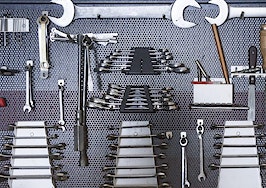- Teaching DIY fixes to clients can save them hundreds or thousands of dollars.
- By imparting DIY knowledge to clients, your referral business will explode.
- This is one of the best ways to build trust with clients.
As a Realtor and broker with over a decade of experience, I have been through hundreds of home inspections. Whether representing the buyer or the seller, I take each home inspection as a learning opportunity to teach my clients about major versus minor repairs.
As the years have passed, I have learned some easy DIY fixes that all agents should know. Advising your clients on easy DIY fixes gives you the opportunity to do a few things:
- Build even more trust between you and the client
- Get more referrals for future business from each client with whom you spend a little bit of extra time and impart valuable knowledge
- Save your clients a lot of money on easy repairs they otherwise wouldn’t know how to do
I started conducting a short learning session with all of my buyer clients after the close of their new home, and I can’t tell you how much the goodwill of doing these sessions is worth to your business.
During these sessions, I point out a few easy DIY fixes and repairs to save my client’s money on a handyman, HVAC company or plumber, and they cannot thank me enough.
If you’ve been in the real estate business long enough, you know there are some usual (almost standard) items that will show up on a home inspection report.
As an agent, I highly suggest you learn how to do the following DIY fixes:
1. Cleaning out a clogged sink
Plumbers in my area charge a minimum $150 service call and approximately $100 per hour with a minimum of one hour. So, before the plumber even steps foot in your door (or your client’s door), they’ve already charged you $250.
It’ll take you about 30 minutes to learn how to clean out a clogged sink and about another 30 minutes to unclog the sink. All sinks have plumbing underneath, usually in a cabinet under the sink that hides the actual hard plumbing.
Sinks have what is called a “p-trap.” This is a downward bend in the piping that traps water and keeps sewer gas from getting back into your home. Nowadays, most plumbing is done with PVC piping.
The p-trap is absolutely where most clogs occur and lead to the slow draining of a sink. Two plastic fittings secure the p-trap. The fittings are reverse threaded, meaning that you unscrew them by turning them right and tighten by turning them left.
To unclog a sink, you’ll need to loosen the two fittings and remove the p-trap. Once the p-trap is removed, you need to take the p-trap outside to a garden hose. I like to run the garden hose through the entire PVC p-trap several times (while the water is flowing from the hose) to rinse out the gunk and grime. You will be both amazed and probably grossed out about what is residing in a home’s plumbing lines.
In addition to cleaning out the p-trap, you’ll need to run a little zip line down the drain from the top of the sink where the stopper is located. Do this after you remove the p-trap. However, be sure there is a bucket under the now-open plumbing as additional gunk and grime will dislodge and fall into the bucket.

Steve Heap / Shutterstock.com
2. Changing HVAC filters
I have had numerous HVAC professionals tell me time and time again that one of the biggest causes of damage to HVAC units is owners failing to change the filter on a regular basis. I like to change my HVAC filter once a month.
[Tweet “Damage to HVAC units is often from owners failing to change the filter regularly.”]
Air conditioning and heating work on the principle of air flow. When the filter gets too clogged, it will stop the flow of air and can freeze the unit — like with a block of ice on the supply line and a sheet of ice on the HVAC coils. Continuous neglect of the filter will eventually cause major damage to the unit.
Changing the HVAC filter and keeping the highest possible efficiency with your unit will keep the energy bills down, prolong the life of the unit and keep the costs of repairs at a minimum.
Pro tip: Filters can either be located at the furnace (in homes) or in the ceilings (in condos). Learn how to change the HVAC filter not only for your clients but also for your own home.
3. Caulking
Home inspectors love caulk, and caulk is a great product for sealing windows, doors, shower surrounds and more. Almost all of the (in fact, I think all) inspection reports I’ve ever seen call for more caulk to be applied somewhere within the home.
A handyman will charge a fair amount of money to come to a home to caulk around the areas needed. Stop! Learn how to caulk and teach your clients how to caulk. Caulking is easy and cheap.
[Tweet “Learn how to caulk and teach your clients how to caulk. Caulking is easy and cheap.”]
Tubes of good caulk cost around $3 at the big box hardware stores. You’ll also need a caulk “gun,” which runs about the same, $3 to $5. For more information, see the video below.
4. Shutting off the water supply to the house at the main valve
A house flood can cause a huge disturbance in the owner’s life and also some major expenses. Teaching your clients how to shut off the home’s water at the main valve can help prevent a substantial flood.
Turning off the water at the main valve will stop all water supply to the home. In my area of the world, the main water valves are located in a box in the front of the house at the street.
The owner will need a water meter key to get into the box and a water meter tool to turn the valve to the off position. Teaching this tip to the new owner can prevent thousands of dollars in damages.
Pro tip: Other tools to recommend to a new homeowner: at least a 10-foot ladder, a pair of work gloves, a drill with drill bits and a set of pliers.
With the ease of education from online research, agents should know a few basic DIY repairs as almost a standard and required part of their job. Plus, going the extra step and spending a few additional minutes with a client will help take your referral business to the next level.
Jeff Knox is lead broker and owner of Knox & Associates Real Estate Brokerage. Follow him on Google Plus and Twitter.





